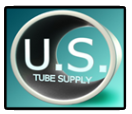Comparative Study of the Behavior of API 5L-X65 Grade Steel and ASTM A53-B Grade Steel against Corrosion in Seawater (Download Full Article)
Rosa Vera*, Fabrizio Vinciguerra, Margarita Bagnara
Institute of Chemistry, Faculty of Sciences, Pontificia Universidad Católica de Valparaíso,
Av. Universidad 330, Placilla (Curauma), Valparaíso, Chile.
*E-mail: rvera@ucv.cl
Received: 18 February 2015 / Accepted: 2 June 2015 / Published: 24 June 2015
Low freshwater availability in northern Chile means that many mining companies use seawater for several different processes. The present study analyzes the corrosion behavior of API 5L X65 steel and ASTM 53-B steel in seawater taken from the coast of northern Chile. Electrochemistry (polarization curves) and mass loss (flow simulation) techniques are used. The results obtained from the (static) electrochemical testing give the corrosion potential, corrosion current, corrosion rate, passivity current and pitting potential. All measurements show improved corrosion behavior in seawater for the API 5L X65 steel. The total corrosion rate, which includes the corrosion and erosion processes for the materials in the flow simulation system, was 0.41 μm year-1 at day 10 for the API 5L X65 steel and 0.59 μm year-1 at day 10 for the ASTM A53-B steel. Scanning microscopy observations show the presence of pitting, more so for the ASTM A53-B steel.
Keywords: corrosion, API 5L X65 carbon steel, ASTM A53-B carbon steel, seawater, mining
1. INTRODUCTION The limited availability of freshwater in northern Chile has affected the mining industry, restricting its possibilities for expansion and the development of new projects due to a lack of this essential resource. As a result, the use of seawater in mineral processes, which once seemed novel, is today practically obligatory for the mining industry. It has progressively increased in recent years with alternatives that include desalination as well as direct use without prior treatment. Seawater is an extremely abundant and corrosive electrolyte of natural origin. It has a high concentration of salts, mainly in the form of chlorides, and covers approximately 70% of the surface of the earth. The aggressive nature of the medium generates high corrosion rates on metals and alloys commonly used in structures and transport systems. In addition, considering the relative motion of a Int. J. Electrochem. Sci., Vol. 10, 2015 6188 corrosive fluid and the metallic material submerged in it, the surface of the material is also exposed to the effects of mechanical wear, a process known as erosion corrosion and the loss of the material is greater in this case than damage produced by erosion and corrosion individually [1-10].
Due to the aggressive nature of the aqueous environment in different parts of an industrial plant, a material’s corrosion resistance has become of vital importance. Given that more durable materials are generally more expensive corrosion resistance is a crucial component of the debate on the impact of selecting certain materials with regard to capital and operational costs in industry.
This has led to increased demand for high-strength steels for the construction of pipelines; examples of such steels are API 5L X65 grade and ASTM A53-B grade. It has been shown that the manufacture of these types of steels requires a strict procedure, controlled hot rolling followed by accelerating cooling of the deformed plate [11-12]. The addition of micro-alloying elements gives an improved response during subsequent processing. For example, the reduction of carbon content (<0.05% in weight) improves solubility and reduces hardness of the area affected by the heat. It has been found that low sulfur content decreases susceptibility to hydrogen-induced cracking and that low phosphorus content reduces hardening in segregated regions [13-14].
API 5L X65 steel is the most widely accepted material for these types of pipes, which require a special limits of formability and strength. These pipes are manufactured with microalloyed steel using elements such as Niobium, Titanium, Vanadium and low Carbon content (0.1% in weight), giving the steel resistance, strength and weldability. A controlled thermo-mechanical rolling process is used to control grain refinement and strengthen the material [15-19].
The alloying of ASTM A53-B grade carbon steel is aimed at mechanical and high pressure applications. It is also acceptable for common uses on vapor, water, gas and air pipelines. Such a pipe system is adequate for welding and other forming operations such as rolling, folding and forming flanges. Together with API 5L X65 steel, they are produced with micro-alloying steel containing elements such as Manganese, Chromium, Vanadium and with low Carbon content [20].
However, the current focus of the manufacture of these materials and studies from an engineering perspective are generally aimed at achieving improved strength. Given that copper producers in Chile use pipes made from these materials, the objective of the present study is to evaluate and compare the corrosion resistance of API 5L X65 and ASTM A53-B grade carbon steel alloys in seawater from northern Chile, using electrochemistry and mass loss techniques.
Grade Steel against Corrosion in Seawater

